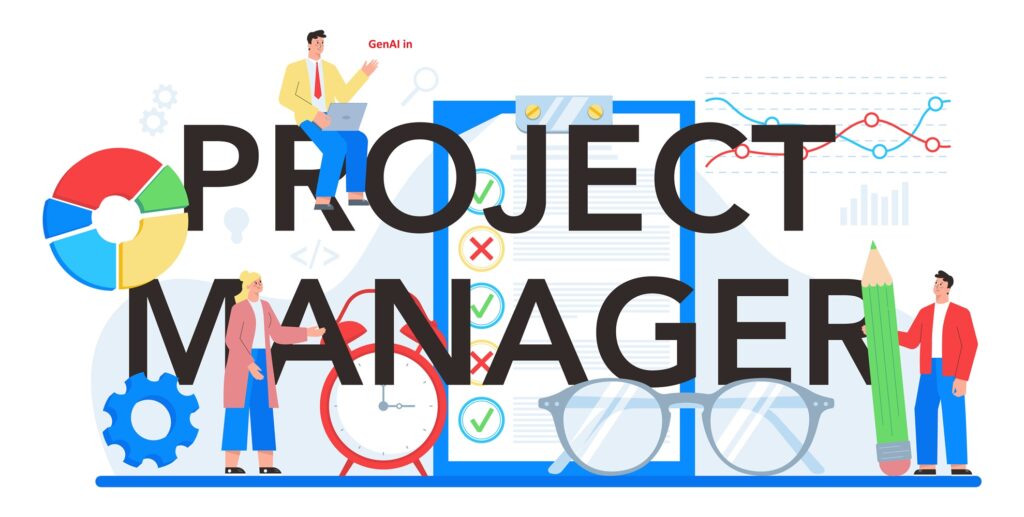
Status: Final Blueprint
Author: Shahab Al Yamin Chawdhury
Organization: Principal Architect & Consultant Group
Research Date: March 3, 2023
Location: Dhaka, Bangladesh
Version: 1.0
Part I: The Generative AI Landscape
Generative AI (GenAI) marks a paradigm shift from traditional AI by focusing on synthesis rather than just analysis. While traditional AI analyzes existing data to make predictions (e.g., forecasting a project delay), GenAI creates new, original content (e.g., drafting a mitigation plan for that delay). This capability reframes AI as an active, collaborative partner for project managers.
Key Capabilities:
- Text & Code: Drafting project charters, status reports, and stakeholder communications; generating and debugging software code.
- Images & Video: Creating design mockups, presentation assets, and marketing materials from text prompts.
- Synthetic Data: Generating realistic datasets to simulate project scenarios and model risks, especially when real-world data is scarce or sensitive.
Core Technologies:
- Large Language Models (LLMs): The foundation for most text-based GenAI, trained on vast datasets to understand language and context (e.g., OpenAI’s GPT series).
- Transformer Architecture: The breakthrough enabling LLMs to scale, using a “self-attention” mechanism to weigh the importance of words and understand long-range dependencies in text.
Key Historical Milestones:
- 1950: Alan Turing introduces the “Turing Test” as a benchmark for machine intelligence.
- 1966: ELIZA, the first chatbot, demonstrates rule-based text generation.
- 2014: Generative Adversarial Networks (GANs) enable the creation of highly realistic synthetic images.
- 2017: Google’s Transformer architecture revolutionizes natural language processing, paving the way for modern LLMs.
- 2022: The launch of ChatGPT brings generative AI into the mainstream, making it an accessible productivity tool for project managers worldwide.
Part II: GenAI Across the Project Management Lifecycle
Generative AI can be applied to every phase of a project, automating administrative work and augmenting strategic tasks.
1. Project Initiation:
- Automated Research: GenAI acts as a research assistant, summarizing market trends and analyzing competitor strategies to build a data-driven business case.
- Document Generation: Quickly drafts foundational documents like the Project Charter based on high-level goals and stakeholder inputs, turning hours of writing into minutes of editing.
2. Project Planning:
- WBS Generation: Decomposes a project scope statement into a hierarchical Work Breakdown Structure (WBS), providing a logical starting point for detailed planning.
- Predictive Scheduling: Analyzes historical data to generate more realistic project schedules and forecast potential bottlenecks.
- Risk Management: Identifies potential risks based on project context and historical data, generating a comprehensive risk register with suggested mitigation strategies.
3. Project Execution:
- Automated Communications: Drafts routine communications like status reports and stakeholder updates by pulling the latest data from project management tools.
- Knowledge Management: Transcribes and summarizes meetings, automatically extracting key decisions and action items to create a searchable project knowledge base.
4. Monitoring & Controlling:
- Real-Time KPI Tracking: Generates dynamic performance dashboards by analyzing real-time project data from integrated PM platforms.
- Predictive Analytics: Forecasts future performance and identifies deviations from the plan before they become critical issues, serving as an early warning system.
5. Project Closing:
- Final Report Generation: Compiles data from the entire project lifecycle to automate the creation of final reports and handover documentation.
- Lessons Learned Synthesis: Analyzes all project data—including communications, change logs, and risk registers—to generate an objective, data-driven lessons learned report that identifies root causes and provides actionable recommendations for future projects.
Part III: Strategic Implementation & Risk Management
Successful adoption of GenAI requires a strategic approach that balances tool selection, change management, and governance.
Adoption Framework:
A phased approach is recommended for integrating GenAI into a PMO:
- Experimentation & Education (Months 1-3): Build foundational knowledge and explore low-risk applications with public tools for non-sensitive tasks.
- Pilot Programs (Months 4-9): Select a few projects to pilot an integrated AI tool, defining clear KPIs to measure impact.
- Scaling & Integration (Months 10-18): Develop a broader rollout strategy, standardizing on a set of tools and integrating them with the existing PM ecosystem.
- Optimization & Governance (Ongoing): Establish a Center of Excellence (CoE) to oversee the GenAI strategy, gather feedback, and refine governance policies.
Key Risks and Ethical Considerations:
- Accuracy and “Hallucinations”: Models can produce plausible but factually incorrect information. Mitigation: A strict “Human-in-the-Loop” (HITL) policy is non-negotiable; all AI-generated content must be treated as a first draft and verified by a human expert.
- Data Privacy and Security: Inputting sensitive project data into public AI models can lead to data leakage and violate confidentiality agreements. Mitigation: Use enterprise-grade, secure AI tools with contractual guarantees against using customer data for model training.
- Bias: AI models can perpetuate and amplify biases present in their training data. Mitigation: Regularly audit AI outputs for bias and ensure training data is diverse and representative.
- Intellectual Property (IP): The legal framework for AI-generated content is still evolving, creating risks of copyright infringement. Mitigation: Use AI tools trained on licensed or royalty-free data and consult with legal counsel on policies for using AI-generated assets.
Part IV: The Future Horizon
The automation of traditional PM tasks will not make project managers obsolete but will elevate the role from a tactical executor to a strategic orchestrator. The focus will shift from administrative work to high-value activities like complex problem-solving, stakeholder relationship management, and ethical oversight.
Future Trends:
- Autonomous Project Agents: The current “copilot” model will evolve into autonomous AI agents capable of independently planning and executing complex work packages with minimal human intervention.
- Hyper-Personalization: AI will create adaptive workflows tailored to the work styles, skills, and cognitive load of individual team members, leading to more engaged and efficient teams.